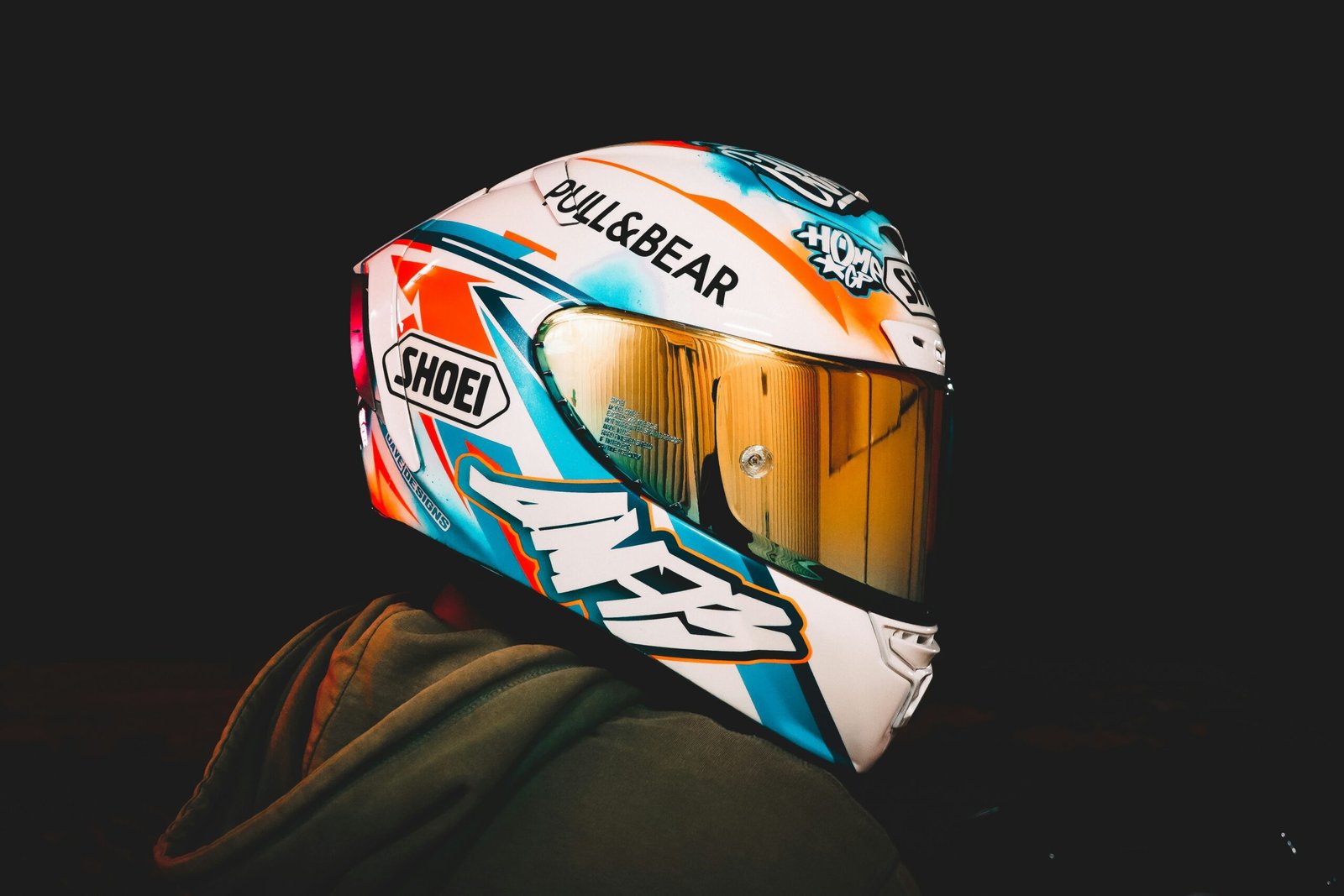ou are a regular rider; you must need a helmet. Every country has concerns about helmets. If you don’t have a helmet, you can’t ride anywhere. Every petrol pump has a red alert: without a helmet, you can’t refill fuel. So, a helmet is most important for every rider.
Style
Start off with one of the most important pieces, and that’s style. When we talk about your helmet, we are not talking about graphics or the fashionability of the helmet. We are talking about what the helmet was designed for; there is a whole bunch of different helmets for a bunch of different applications. Let’s start with the street helmet like the SHOEI RF-1200—this is your standard track day helmet—or the NOLAN N87, which is a motorcycle helmet you see a lot on the street. Next, let’s talk about ADV dual sports helmets. They are usually characterized by the beak over the helmet that helps with sun glare. You can set goggles on this and also add XD4 goggles on it. This type of helmet flows a ton of air. Finishing out our list of styles are the three-quarter and half helmets. When you see the street, you see a lot of riders with three-quarter helmets; this is popular for small rides. Three-quarter and half helmets are highly recommended to be avoided because they don’t have a chin bar. They flow a ton of air; as a result, a half helmet doesn’t have anything in the back, so your neck breathes, but the only problem is unless you crash.
Certification
Now we’re talking about the certification sticker on the back. There are a whole bunch that you need to consider when you purchase a helmet.
1.First one we are talking about is DOT. DOT is from the good old U.S. and it’s about 30 years old. A lot of things have changed in 30 years, including helmet design. DOT only requires you to self-certify your helmet.
2.Somebody who actually cares about the survival of their constituents is the ECE, or the Economic Commission of Europe. That is going to be the sticker that you must see on your helmet. It is the bare minimum in our opinion. It represents a helmet that has been safety tested by people who actually care.
3.The SNELL Memorial Foundation was established in 1957. This is a track-day specific certification. You are going to see it on a lot of track day helmets, and the Snell Memorial is completely voluntary. This is not something that you are going to see in a lot of helmets.
4.FIM is actually the body that tests helmets for racing like MotoGP, and we like to think that it is the gold standard.
Fit
If the fit is not right, it is not going to work for you. Describe a good fit for the folks at home: on a good fit motorcycle helmet, you don’t want it too loose and you don’t want it too tight. If you put on a helmet and you get pressure points in your temples or in the back of your head, that’s a bad fit. It’s going to make it uncomfortable, and it’s not going to work right. Conversely, if your helmet is way too loose, it might fall off your head whenever you are riding and have an impact when you crash. Talking about vlogging helmets, a vlogging helmet has a lot of accessories like a camera, microphone, communicator, etc. So, helmet fit is very important for vloggers. When you buy a helmet, go to the market, check it, and wear it on your head to make sure it fully fits your head before you purchase it. Please do not wear the wrong size helmet.
Myths
Price and safety: a lot of folks see a $100 helmet and a $700 helmet and think the $700 helmet is seven times as good as the $100 helmet. That’s not necessarily true. A certified helmet of $100 is not bad but not similar to the $1000 helmet, but it’s good. Many times, low-budget certified helmets perform very well, so this myth is not true.

